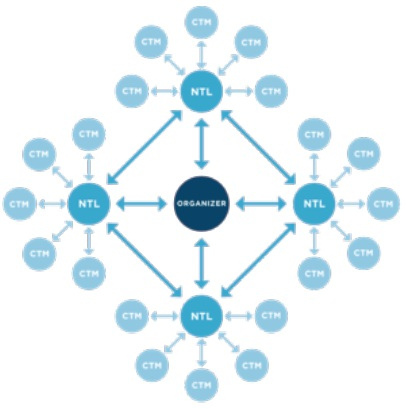It is our intention to spend our year with a CRI fellowship studying and testing methods to combine grassroots political organizing techniques with film distribution. And here’s why.
Most independent films are given a narrow one-way avenue towards finding their audience. So many times, a film over which a group of people has slaved for years, is pushed through the film festival circuit, only to come out with no distribution deal, no path to a bigger audience, and no way to recoup costs. These films may receive praise at a handful of venues, they may get glowing reviews, but they’re still relegated to an extremely limited audience, rarely even given the opportunity to see if they could play to a more diverse audience. We intend to explore a variety of grassroots tools and methods to explore how this audience wall can be pushed, if not even completely broken. First, it’s essential to establish what we mean by a “grassroots” organization before we talk about how it could be used in film (we’ll be revisiting this definition throughout our findings). No matter what its strict definition, the thoroughness of a grassroots operation depends on how each entity or person involved is respected, empowered, included, and in turn, takes ownership of their part in expanding the movement. The motivation derives from the sense of importance, urgency, and necessity felt within personally, rather than from top-down leadership that uses a financial incentive for those “below” them in the hierarchy. The organization subverts any standard corporate structure of power; no one dictates the specifics of what is done at every level, and everyone owns and determines what their responsibility is. How could this translate to independent film distribution? In short, it’s worth considering whether independent film fails to find its audience because it relies on a system that was developed for only certain types of films and was generally developed in a different financial and technological atmosphere. Essentially, we are interested in figuring out how to mobilize an audience through grassroots methods such that a film’s reception is not solely dictated or confined by gatekeepers such as film festivals, traditional venues (“arthouses” or otherwise), film reviewers and advertising. The goal of a grassroots operation with a film should be to use and facilitate the enthusiasm and advocacy of an already existing audience so that their support expands outwards, to then reach new audiences that may not normally be inclined to see independent film – but who are actually a good audience for that film.
The type of operation we are exploring should not only be a means to getting more humans in seats, but also a way to have a more meaningful relationship between the film/filmmaker and audience member. Grassroots models depend on enthusiasm and a shared feeling that this “thing” – be it a candidate or a film – is important and needs to be shared. Additionally, through outreach efforts, a person seeing a film can feel like they are closer to a filmmaker and be part of the film team much more than they would had they just seen a movie because of a trailer or New York Times review. Therefore, in not just one way, grassroots distribution also has the potential to drastically alter the relationship between audience and film. The audience is empowered to become part of the film, which does no less than escalate them beyond their status as merely the audience. Essentially, the audience, instead of being targeted solely as a “consumer” that purchases the film as a “product,” becomes part of the “project” (or, campaign) of the film. They are not only consumers of the film, but also potential advocates of it. There is not just creation and reception; a film’s exhibition and viewers become an essential part of its life instead of the end of its life, and therefore extend its life.
The attribution of the term “grassroots” to independent film distribution is not new, but we believe the tools, strategies, and processes we are interested in exploring have often not been implemented in the realm of film, and when used at all, tend to be applied towards so called “issue films” and are not known by many other filmmakers who could benefit from them. If done correctly, we wonder if a grassroots operation can increase both the volume of people that experience the film, as well as their variety, thus greatly expanding the scope and reach of the film and increasing the level of enjoyment and engagement an audience has watching the film. This increase in audience could open doors, not only for that specific film, but also for those new audience members to be receptive to whole new categories of film in the future. Our idea is not so much to design a cure-all method for all independent films to follow. It is, in fact, incumbent on any grassroots movement to not be formulaic at heart, as we believe these movements rely on a personal, genuine, and nuanced touch to be effective. But even so, much can be learned from the techniques of one campaign that could translate to the next, and if we were able to create a grassroots toolbox and set of best practices for filmmakers to utilize on their films, we could provide an invaluable resource for the indie world.
-Michael and Josh




